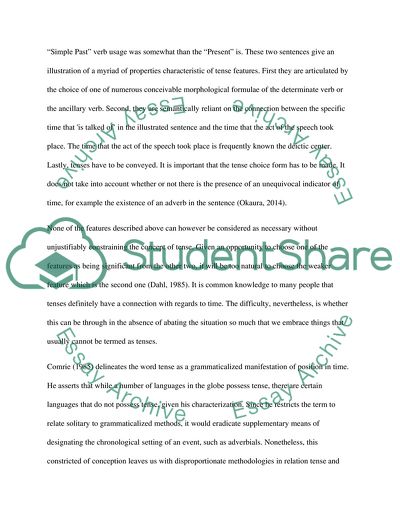Cite this document
(“English and Japanese Tense and Aspect Features Essay”, n.d.)
Retrieved from https://studentshare.org/humanitarian/1698597-english-grammar-verb-tense-and-aspect
Retrieved from https://studentshare.org/humanitarian/1698597-english-grammar-verb-tense-and-aspect
(English and Japanese Tense and Aspect Features Essay)
https://studentshare.org/humanitarian/1698597-english-grammar-verb-tense-and-aspect.
https://studentshare.org/humanitarian/1698597-english-grammar-verb-tense-and-aspect.
“English and Japanese Tense and Aspect Features Essay”, n.d. https://studentshare.org/humanitarian/1698597-english-grammar-verb-tense-and-aspect.


